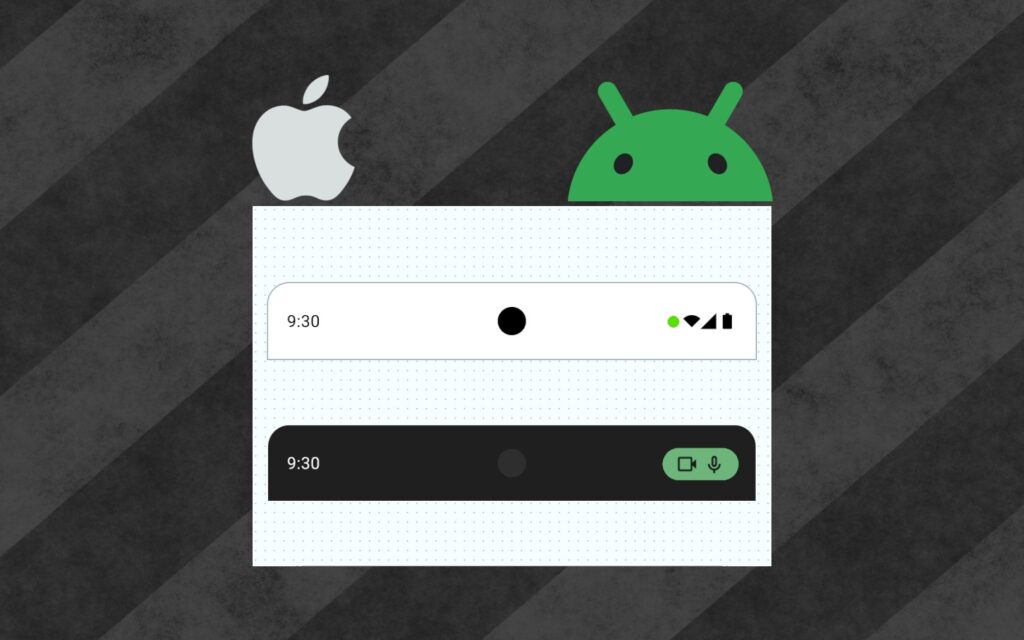Smartphones have become increasingly modern, and increasingly secure, as they store a significant amount of personal and sensitive information. With the increased use of apps that utilize cameras and microphones, concerns have arisen about user privacy. Thus, operating systems such as iOS and Android have introduced privacy indicators in the status bar, to alert users when an application is accessing these resources. And that is precisely what the green and orange dots do, as we will learn more about below:
Meaning of the green and orange dots at the top of the cell phone
Privacy indicators, represented by green or orange dots at the top of the cell phone screen (status bar), are a measure to increase transparency about the use of the camera and microphone by applications. On iPhone (iOS 14 or later), the orange dot indicates microphone activation, while the green dot indicates camera access.
On Android, a single green dot is used for both cases. In newer or customized versions of Android, in some cases the camera or microphone icon is shown.
These indicators often go unnoticed by most users, but they play a crucial role in protecting privacy. When these icons are activated without us using the camera or microphone, they may indicate that an application is recording without our consent. There may be a spy or malicious application installed on the device.
To ensure data privacy, it is important for users to regularly check app permissions on their devices. On Android, this can be done through the Privacy Dashboard, which provides a timeline of camera and microphone-related app activity. On iOS, the App Privacy Report offers similar information.
See how privacy cues are a valuable tool for protecting the privacy of mobile device users? Now that you are aware of these indicators, always check application permissions regularly to take steps to ensure that your personal data is not accessed without your consent.
